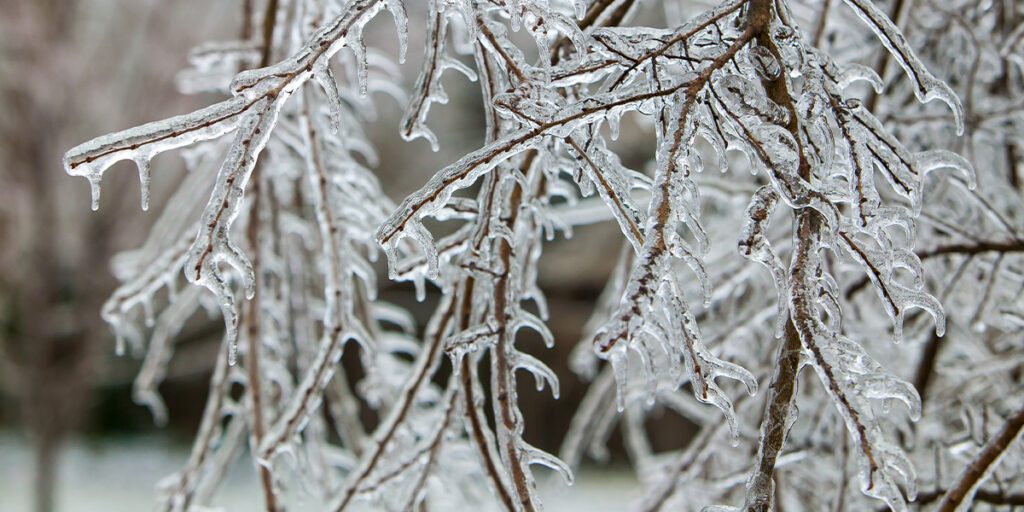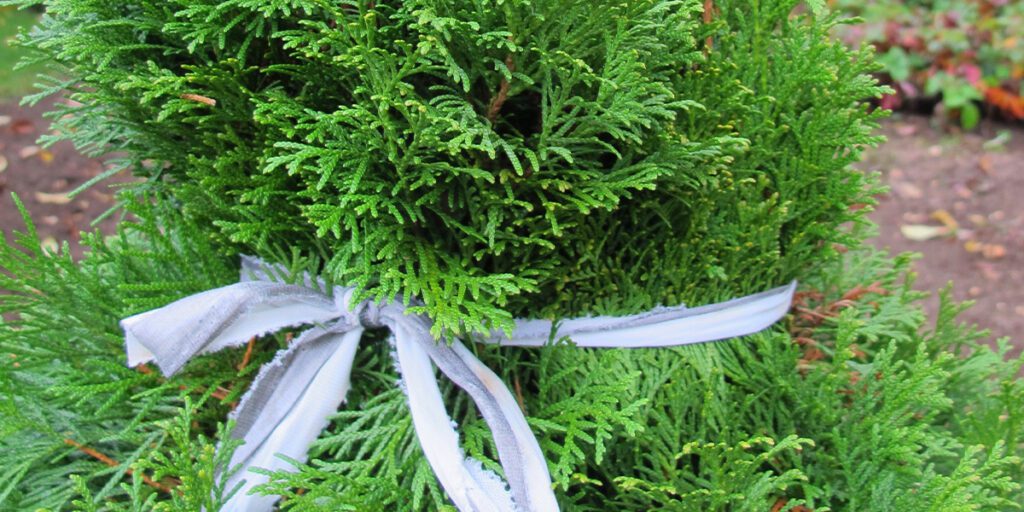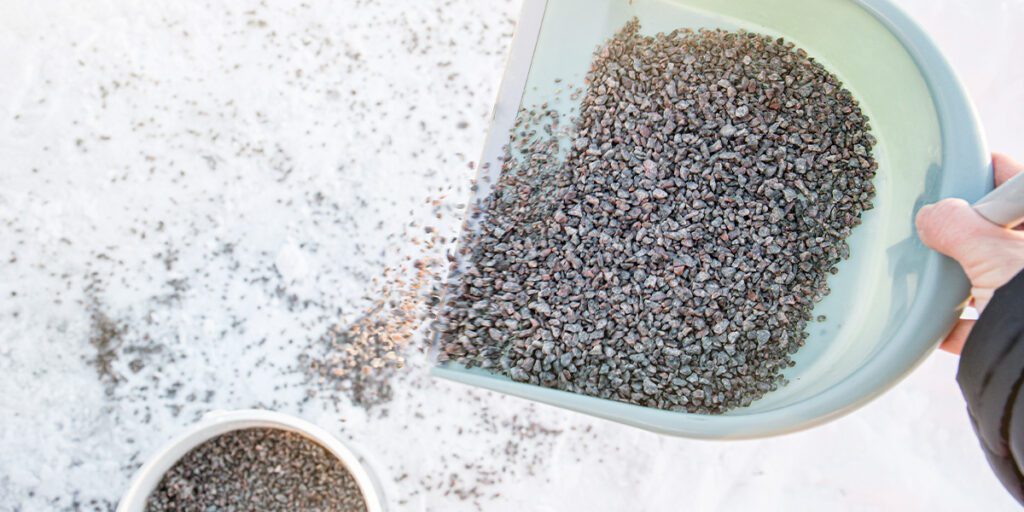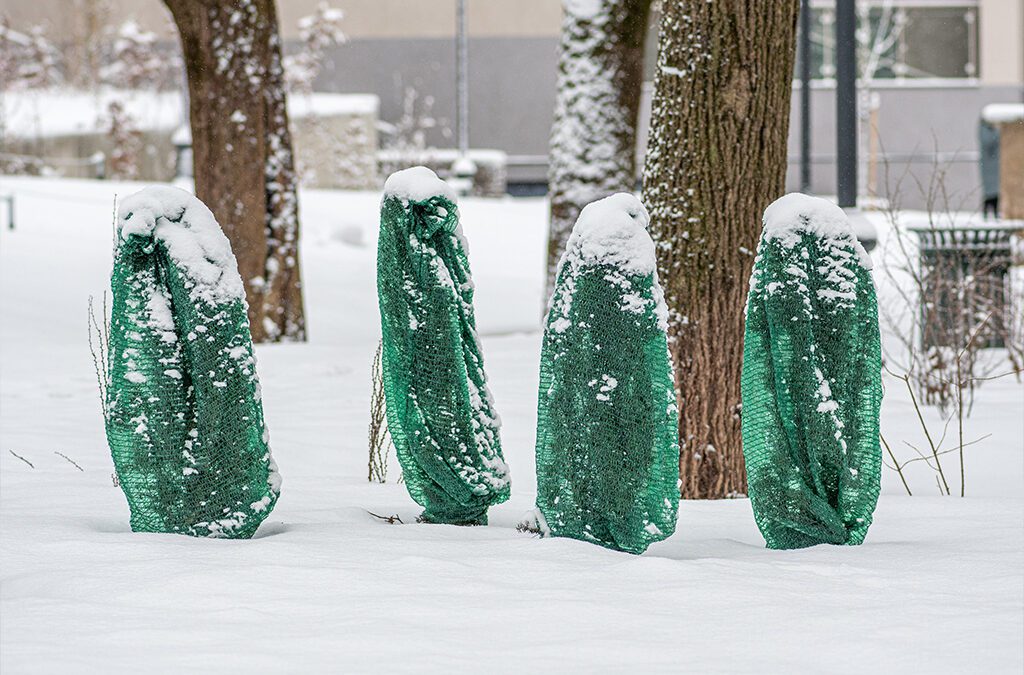Heavy snow, salt damage, and cold temperatures are just a few of the difficulties our plants have to overcome each winter. While most of them are masters at withstanding the elements, we can still help and take care of them in order to avoid damage by proactively managing our landscape. Here are a few tips for dealing with snow, salt, and other variables this winter!
How To Manage Heavy Snow
Every tree in your landscape has its own strategy for dealing with heavy snow. Deciduous trees shed their leaves and stiffen their branches, making it easy for snow to slide off and pass through. On the other hand, large evergreens, like spruce and pine, have flexible branches that buckle to release snow when it gets too heavy. However, even with these adaptive skills, unusually wet, heavy, or icy snow can still throw our trees a curveball and break their branches.
Fortunately, we can take care of our trees and shrubs through extreme weather with these methods:
- Brush Off The Snow: This is the most obvious way we can help trees during heavy snow, but it’s only possible if the trees are small enough for us to reach. It also matters which way we brush. Brushing down with a broom puts extra weight on already overloaded branches, potentially snapping them. Instead, take this load off by brushing upwards and letting the snow fall off as you lift the branch into the air.

- Leave Frozen Branches: Snow that’s been shoveled onto a plant can become hard, frozen, and difficult to remove. In these instances, it’s better to leave the snow and let it melt on its own rather than try and remove it, to prevent damaging the plant. Likewise, ice-covered branches can easily snap if we try to knock off the ice. It’s better to leave them or, if possible, spray them with water to melt off the ice.

- Tie Up Small Trees and Shrubs: Small, weak-wooded deciduous trees and multi-stemmed evergreens, like junipers and arborvitae, are particularly susceptible to damage from heavy snow. Prevent broken branches by tying them up to the main stem in a cone formation. This stabilizes any weak limbs and makes the whole plant more resilient against snow loads.
- Wrap Vulnerable Trees or Shrubs in Burlap: Tying branches into a cone formation and then wrapping them in burlap is an extra-secure way to protect them from heavy snow during the winter. Make sure you only wrap them when temperatures are consistently below 40 degrees, and remove the wrapping in the spring when temperatures exceed 40.
How to Manage Salt in Your Landscape
Salt is another variable in our winter landscape that can harm plants, and we can easily be responsible for salt damage without knowing it. Shoveling dirty or salty snow onto grass, shrubs, trees, or gardens can all harm our landscape as it melts in the spring. Fortunately, there are ways to take care our plants in the face of these problems:
- Shovel Dirty Snow Away From Plants: The best way to move salty snow from your property is to push it onto the road. However, if that’s not an option, pile it somewhere on a pathway or driveway where it will flow off your landscape as it melts instead of into your tree roots or gardens.

- Use Salt Alternatives: Salt’s not good for our landscape, nor is it the best for our freshwater rivers and lakes. Instead, try using coarse sand, gravel, or calcium chloride to give you more traction or melt that pesky ice. If you must use regular salt for safety reasons, use it sparingly.
- Set Up a Barrier Against Salt Spray: Salt spray from roads can harm adjacent trees. Damage shows up in the spring in the form of stunted growth, die back, brown evergreen branches, bud drop, or clusters of dead twigs known as “witches broom.” If you suspect trees in your landscape are vulnerable to road spray, set up burlap screens around them as an extra method of protection.
- Know Your Tree’s Salt Tolerance: Eastern red cedar, Kentucky coffeetree, Japanese lilac, quaking aspen, and black walnut are all examples of salt-tolerant trees. They do well in areas exposed to road salt, whereas other trees will be more affected and benefit from protection. Therefore, to best protect your trees, you should first be familiar with their salt tolerance.
Our snowy Chicago landscape is ultimately a gift to our gardens and agriculture for the following spring. Though it can become a hazard in large quantities, we can easily do our trees a favor by taking care of them through those big storms. Meanwhile, enjoy the snow as it comes!
For more landscaping tips, check out our other blogs or stop by and visit our garden centers in Bloomingdale and Carpentersville!


